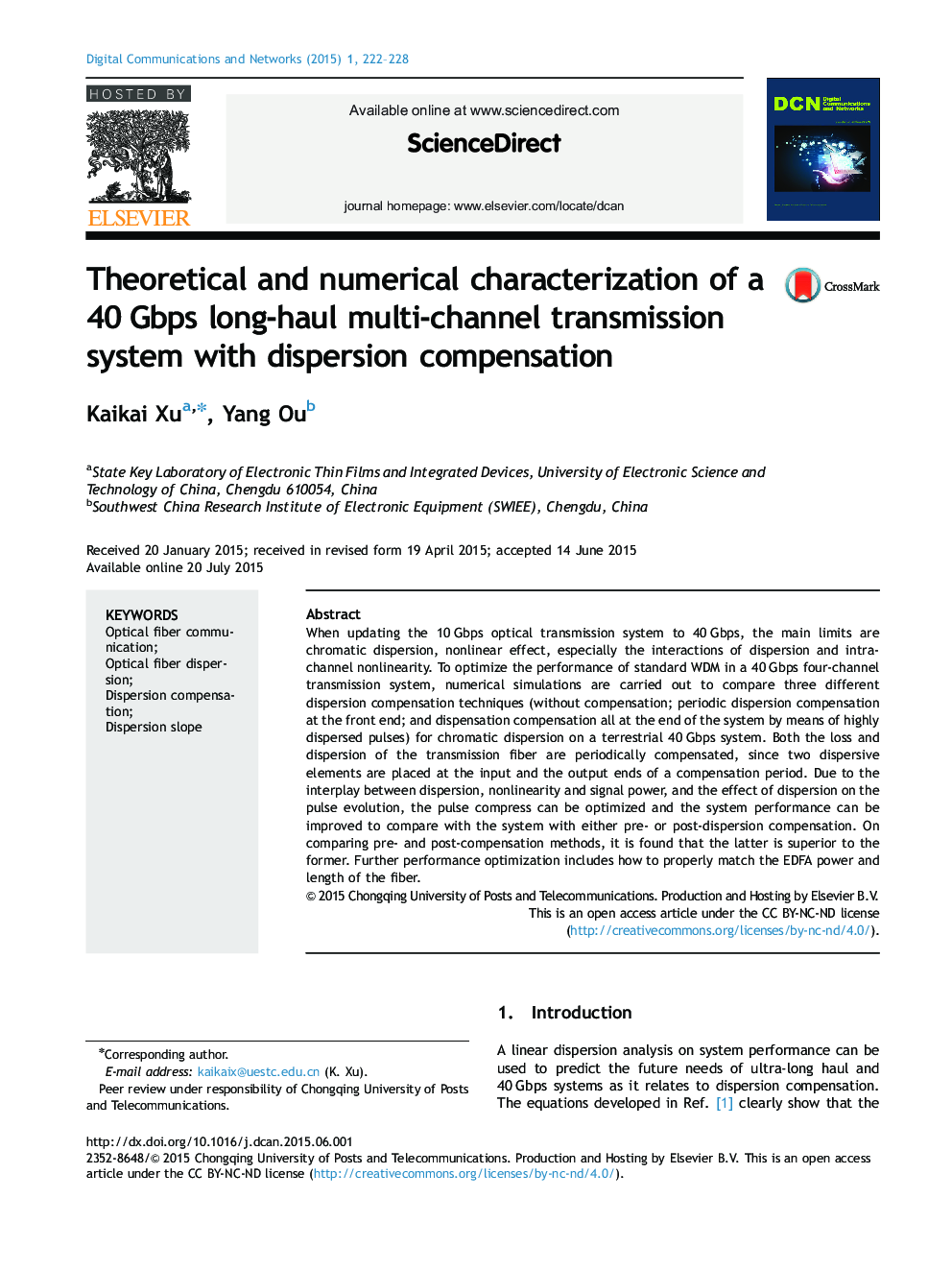| Article ID | Journal | Published Year | Pages | File Type |
|---|---|---|---|---|
| 704144 | Digital Communications and Networks | 2015 | 7 Pages |
When updating the 10 Gbps optical transmission system to 40 Gbps, the main limits are chromatic dispersion, nonlinear effect, especially the interactions of dispersion and intra-channel nonlinearity. To optimize the performance of standard WDM in a 40 Gbps four-channel transmission system, numerical simulations are carried out to compare three different dispersion compensation techniques (without compensation; periodic dispersion compensation at the front end; and dispensation compensation all at the end of the system by means of highly dispersed pulses) for chromatic dispersion on a terrestrial 40 Gbps system. Both the loss and dispersion of the transmission fiber are periodically compensated, since two dispersive elements are placed at the input and the output ends of a compensation period. Due to the interplay between dispersion, nonlinearity and signal power, and the effect of dispersion on the pulse evolution, the pulse compress can be optimized and the system performance can be improved to compare with the system with either pre- or post-dispersion compensation. On comparing pre- and post-compensation methods, it is found that the latter is superior to the former. Further performance optimization includes how to properly match the EDFA power and length of the fiber.
